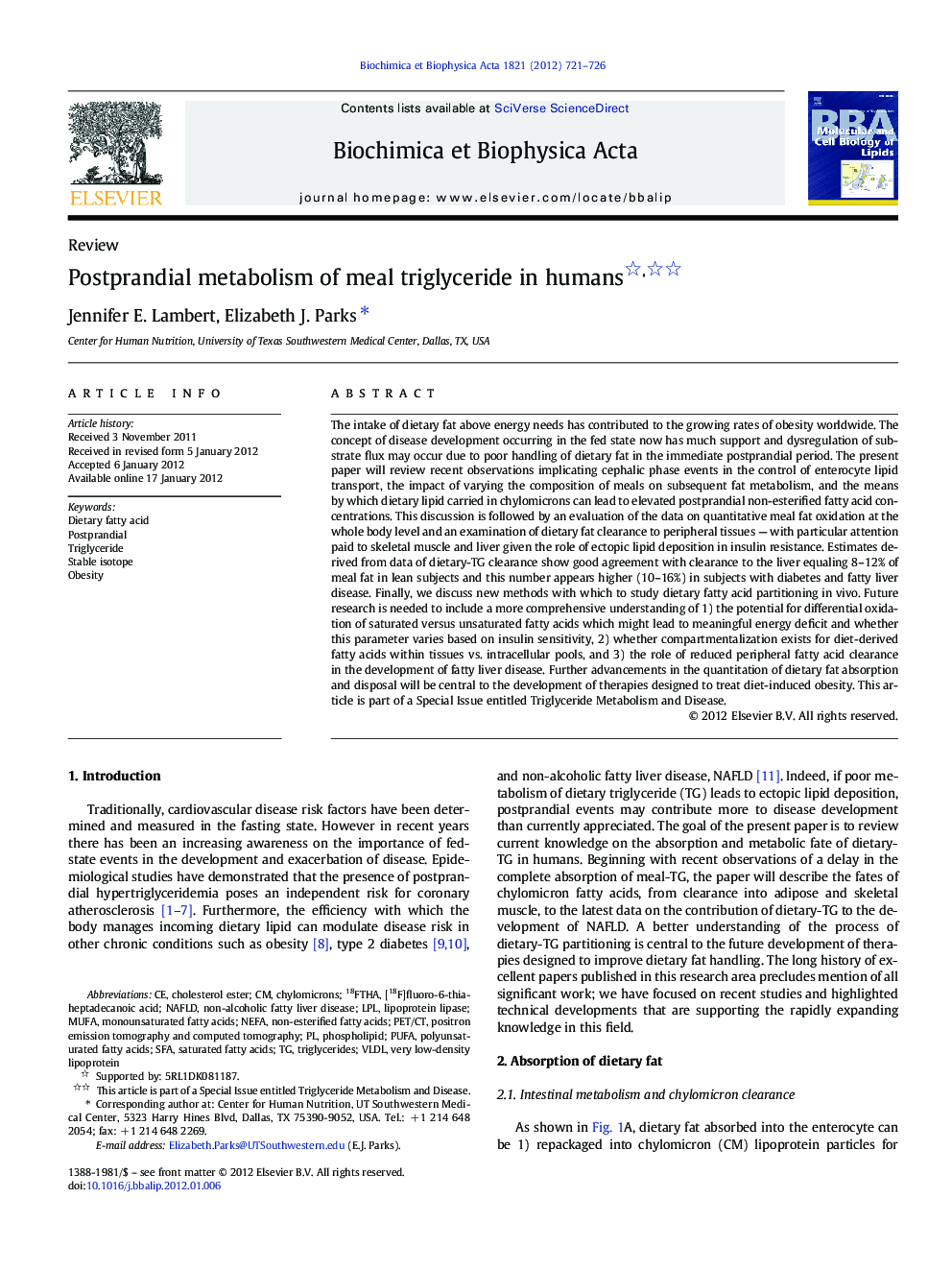| کد مقاله | کد نشریه | سال انتشار | مقاله انگلیسی | نسخه تمام متن |
|---|---|---|---|---|
| 1949350 | 1537754 | 2012 | 6 صفحه PDF | دانلود رایگان |

The intake of dietary fat above energy needs has contributed to the growing rates of obesity worldwide. The concept of disease development occurring in the fed state now has much support and dysregulation of substrate flux may occur due to poor handling of dietary fat in the immediate postprandial period. The present paper will review recent observations implicating cephalic phase events in the control of enterocyte lipid transport, the impact of varying the composition of meals on subsequent fat metabolism, and the means by which dietary lipid carried in chylomicrons can lead to elevated postprandial non-esterified fatty acid concentrations. This discussion is followed by an evaluation of the data on quantitative meal fat oxidation at the whole body level and an examination of dietary fat clearance to peripheral tissues — with particular attention paid to skeletal muscle and liver given the role of ectopic lipid deposition in insulin resistance. Estimates derived from data of dietary-TG clearance show good agreement with clearance to the liver equaling 8–12% of meal fat in lean subjects and this number appears higher (10–16%) in subjects with diabetes and fatty liver disease. Finally, we discuss new methods with which to study dietary fatty acid partitioning in vivo. Future research is needed to include a more comprehensive understanding of 1) the potential for differential oxidation of saturated versus unsaturated fatty acids which might lead to meaningful energy deficit and whether this parameter varies based on insulin sensitivity, 2) whether compartmentalization exists for diet-derived fatty acids within tissues vs. intracellular pools, and 3) the role of reduced peripheral fatty acid clearance in the development of fatty liver disease. Further advancements in the quantitation of dietary fat absorption and disposal will be central to the development of therapies designed to treat diet-induced obesity. This article is part of a Special Issue entitled Triglyceride Metabolism and Disease.
► We review aspects of postprandial lipid metabolism and fates of dietary fat.
► Gut lipid release is initiated by cephalic events and enhanced by meal consumption.
► Meal composition influences postprandial lipid delivery, storage, and oxidation.
► Spillover of dietary fat contributes to plasma free fatty acid concentrations.
► New technologies will improve estimates of tissue-specific meal fat metabolism.
Journal: Biochimica et Biophysica Acta (BBA) - Molecular and Cell Biology of Lipids - Volume 1821, Issue 5, May 2012, Pages 721–726